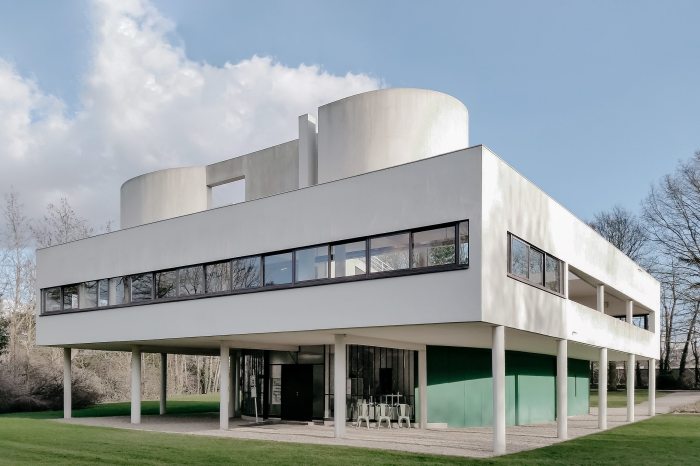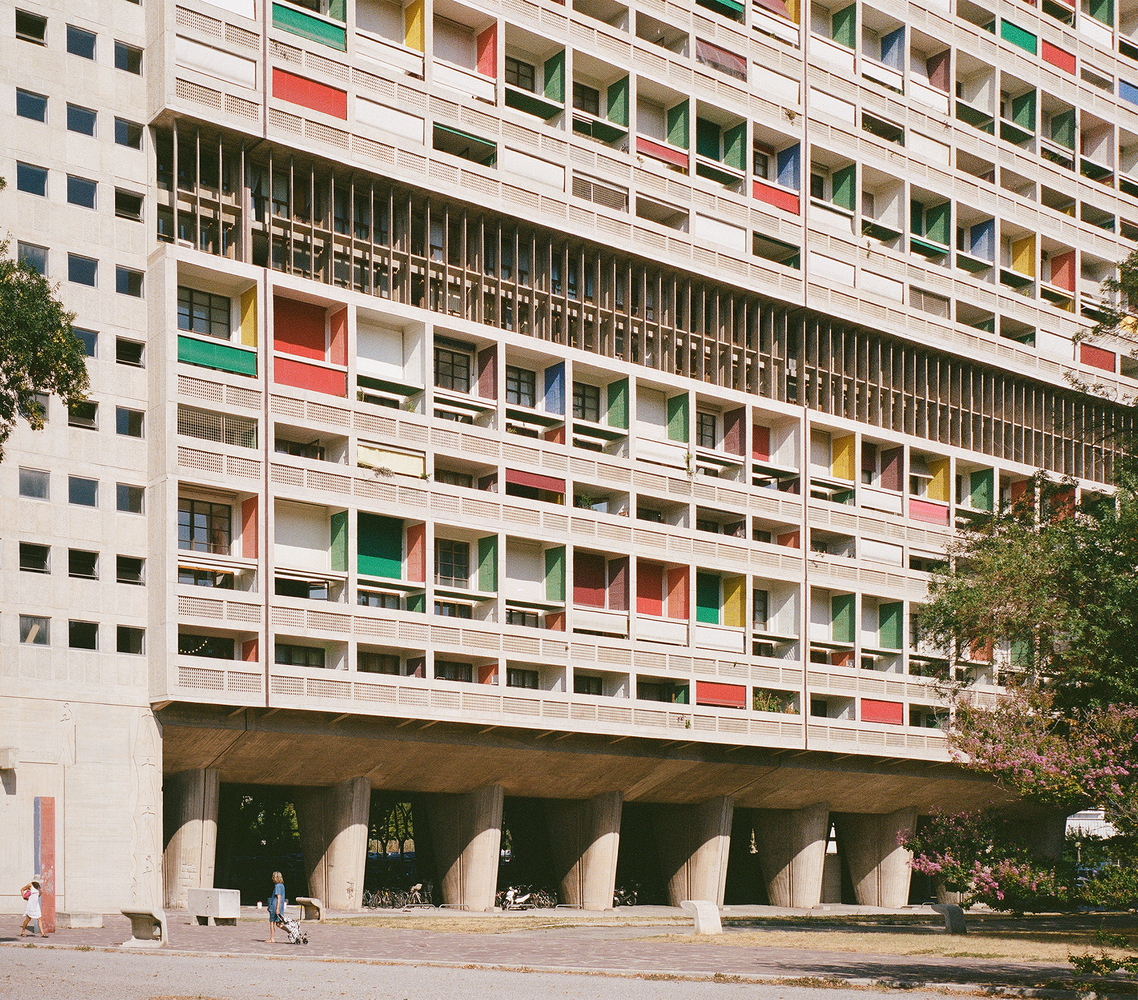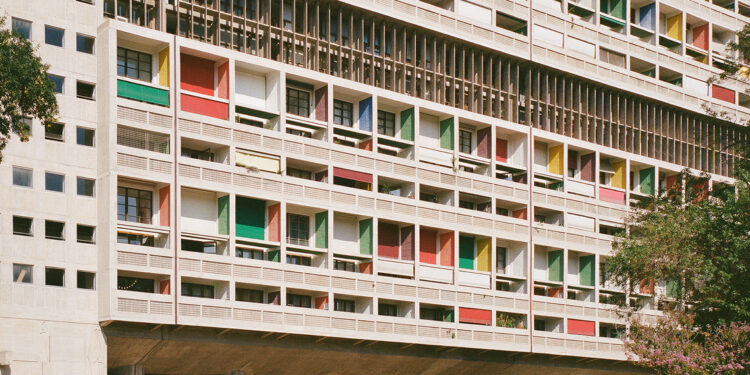Diving into the world of Le Corbusier, readers are transported into a fascinating journey through the life and works of this iconic architect. From his groundbreaking designs to his revolutionary impact on modern architecture, this introduction sets the stage for an enlightening exploration.
Providing a detailed glimpse into the architectural genius of Le Corbusier, this section offers a comprehensive look at his innovative style and enduring influence on the urban landscape.
Background of Le Corbusier
Le Corbusier, born as Charles-Édouard Jeanneret-Gris in Switzerland in 1887, was a pioneering architect, designer, urban planner, and writer. He is considered one of the most influential figures in the development of modern architecture and design.Le Corbusier’s major contributions to architecture and design include his innovative approach to urban planning, his emphasis on functionality and efficiency in design, and his use of new materials such as reinforced concrete.
He is known for his iconic buildings such as Villa Savoye, the Unité d’Habitation in Marseille, and the Notre Dame du Haut chapel in Ronchamp.His impact on modern architecture is profound, as he introduced the concept of “Le Corbusier’s Five Points of Architecture,” which emphasized the use of pilotis, flat roofs, open floor plans, horizontal windows, and free facade design.
These principles have influenced generations of architects and continue to shape architectural practice today.
Architectural Style of Le Corbusier
Le Corbusier, a pioneer of modern architecture, was known for his innovative and groundbreaking architectural style that revolutionized the field. His designs were characterized by a blend of functionality, geometric forms, and a focus on maximizing space and light.
Characteristics of Le Corbusier’s Architectural Style
- Use of pilotis (supports): Le Corbusier elevated his buildings on pilotis, allowing for open space underneath and creating a sense of lightness.
- Ribbon windows: Horizontal windows that wrapped around the corners of buildings, providing abundant natural light and ventilation.
- Flat roof terraces: Utilizing flat roofs as functional outdoor spaces, blurring the lines between indoors and outdoors.
- Open floor plans: Embracing open layouts to promote flexibility and flow within the living spaces.
Key Elements of Le Corbusier’s Design Aesthetic
- Modular design: Embracing standardization and geometric shapes to create efficient and harmonious structures.
- Integration of nature: Incorporating green spaces, natural light, and ventilation to connect buildings with their surroundings.
- Minimalism: Stripping away unnecessary ornamentation and focusing on essential elements to achieve a sleek and timeless aesthetic.
Comparison with Other Prominent Architects of His Time
Le Corbusier’s style stood out among his contemporaries due to its emphasis on functionality, simplicity, and the use of modern materials like concrete and steel. In contrast to the ornate and decorative designs of architects like Frank Lloyd Wright, Le Corbusier’s approach was more minimalist and utilitarian.
His influence can be seen in the work of later architects who embraced the principles of modernism and the International Style.
Influence on Urban Planning

Le Corbusier’s impact on urban planning theories was profound, revolutionizing the way cities were designed and organized. His innovative ideas continue to shape contemporary urban landscapes.
City Design and Organization
Le Corbusier believed in the concept of the Radiant City, where tall residential towers surrounded by green space would create a harmonious living environment. He emphasized the importance of separating traffic flow from pedestrian areas, advocating for efficient transportation systems within cities.
Impact on Contemporary Cities
- Le Corbusier’s vision of functional zoning influenced modern city planning, with distinct areas for residential, commercial, and industrial activities.
- His ideas on open green spaces and efficient transportation networks have been integrated into urban development projects worldwide.
- Contemporary cities often strive to achieve the balance between density and livability that Le Corbusier envisioned in his urban planning concepts.
Notable Works by Le Corbusier
Le Corbusier, a pioneer of modern architecture, has left a lasting legacy through his iconic buildings that have significantly influenced the architectural landscape. Let’s explore some of his most famous works and their innovative design aspects.
Villa Savoye
Villa Savoye, located in Poissy, France, is one of Le Corbusier’s most renowned works. Completed in 1931, this modernist masterpiece is a prime example of Le Corbusier’s five points of architecture, which include pilotis, flat roof terrace, open floor plan, horizontal windows, and free facade.
The use of reinforced concrete and the emphasis on functionality and simplicity make Villa Savoye a significant contribution to architectural history.
Unité d’Habitation
Unité d’Habitation, a residential housing complex in Marseille, France, is another notable work by Le Corbusier. Built between 1947 and 1952, this building exemplifies Le Corbusier’s concept of “vertical garden city,” with its innovative design incorporating communal spaces, rooftop terrace, and modular apartments.
The building’s iconic brise-soleil, or sun breakers, demonstrate Le Corbusier’s emphasis on blending form and function to create a harmonious living environment.
Chandigarh Capitol Complex
The Chandigarh Capitol Complex in India is a striking example of Le Corbusier’s urban planning principles. Designed in the 1950s, this complex comprises several government buildings, including the High Court, Secretariat, and Assembly Hall. The use of raw concrete, geometric forms, and large open spaces reflects Le Corbusier’s vision of a modern, efficient administrative center.
The complex stands as a testament to Le Corbusier’s influence on urban planning and architectural design.
Relationship with Modernism
Le Corbusier played a significant role in the modernist movement, revolutionizing architecture with his innovative ideas and designs that broke away from traditional styles.
Modernist Principles Reflected in His Work
Le Corbusier’s work reflects the principles of modernism through his emphasis on functionality, simplicity, and the use of industrial materials. He believed in the importance of creating buildings that responded to the needs of the people who would inhabit them, rather than adhering to ornamental traditions.
- Utilization of open floor plans and flexible spaces to promote efficiency and adaptability.
- Emphasis on geometric forms and clean lines, rejecting unnecessary decoration.
- Integration of large windows and natural light to create a sense of openness and connection to the surrounding environment.
- Use of reinforced concrete and steel structures to achieve a sleek and modern aesthetic.
Influence of Modernist Ideas on His Architectural Creations
Le Corbusier’s architectural creations were heavily influenced by modernist ideas, shaping the way he approached design and urban planning.
- His famous “Five Points of Architecture,” which included pilotis, flat roofs, open floor plans, horizontal windows, and free facade, exemplified his commitment to modernist principles.
- His urban planning concepts, such as the “Radiant City” and the “Plan Voisin,” embraced modernist ideals of efficiency, hygiene, and social progress.
- Through his writings and manifestos, Le Corbusier advocated for a new way of thinking about architecture that aligned with the modernist movement’s vision for the future.
Final Summary

In conclusion, the profound impact of Le Corbusier’s visionary work continues to resonate in the realm of architecture and design. His legacy serves as a timeless inspiration for future generations of creators and innovators.
FAQ Guide
What were some of Le Corbusier’s major contributions to architecture?
Le Corbusier made significant contributions to architecture through his innovative urban planning concepts, such as the Five Points of Architecture and the use of open floor plans.
How did Le Corbusier influence modern architecture?
Le Corbusier’s emphasis on functionality and geometric forms revolutionized modern architecture, setting new standards for design and construction.
What are some of Le Corbusier’s most famous buildings?
Notable works by Le Corbusier include Villa Savoye, Unité d’Habitation, and the National Museum of Western Art in Tokyo.
What is Le Corbusier’s architectural style known for?
Le Corbusier’s architectural style is characterized by geometric shapes, pilotis (supporting columns), and an emphasis on open interiors and functional design.














